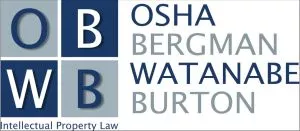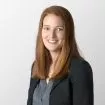- within Intellectual Property topic(s)
- in United States
On August 26, 2024, the U.S. Court of Appeals for the Federal Circuit (Federal Circuit) affirmed a ruling made by the Patent Trial and Appeal Board ("Board") against a first-inventor, second-filer claim in its first review of a derivation proceeding.1
In 2011, the Leahy-Smith America Invents Act (AIA) was passed, transforming the US patent system from "first-to-invent" to "first-to-file". Previously, under the first-to-invent system, an inventor could obtain a patent despite not being the first to file a patent application directed to the invention, provided that the inventor could prove through sufficient evidence that he/she conceived of the invention and reduced it to practice prior to the filing date of the patent application. Following enactment of the AIA, there remains a provision for a "first-inventor second-filer" to obtain a patent if he/she can prove that the "first-filer" derived the invention from the "second-filer". In order to fulfill this requirement, facts must be presented that prove the "second-filer" conceived of the invention and communicated the invention to the "first-filer" prior to the filing of the patent application. The first-filer may overcome this assertion by proving they independently conceived of the invention.
Turning to the case at hand, Global Health Solutions ("GHS") filed a petition for an AIA derivation proceeding against Marc Selner on August 11, 2017. The inventor of the GHS application, Bradley Burnam, and Selner met while working for companies that shared a common co-founder. Burnam later separated and started GHS. Selner's patent application (US 15/549,111; "the '111 application") was filed on August 4, 2017. Four days later, on August 8, 2017, the GHS patent application (US 15/672,197; "the '197 application") to Burnam was filed. Both applications were directed to a method for preparing a wound treatment ointment which includes an aqueous biocide suspended in petroleum jelly without the need for emulsifier.
It was undisputed that GHS and Selner each filed a patent application covering the same invention, with Selner being the "first-filer" and GHS being the "second-filer." GHS contended that, despite the earlier filing, Selner was not the true inventor. GHS alleged that Burnam, the inventor of the '197 application, was the actual inventor and that the invention was communicated to Selner by Burnam prior to Selner filing the '111 application. Thus, GHS contended that its patent application should be granted despite it being filed after Selner's application.
GHS filed a petition claiming that Selner derived the claims of the '111 application from Burnham. Specifically, GHS asserted that Burnam conceived of the process and then told Selner. Selner stated that it was actually he who disclosed the critical step of the invention to Burnham. GHS further argued that Selner failed to show actual reduction to practice of the invention, which GHS believed to be required to complete conception. After reviewing the evidence from both sides and an oral proceeding, the Board determined that Burnam proved that he communicated the invention via email to Selner by 4:04 pm on February 14, 2014. However, the Board also determined that Selner proved that he communicated the invention earlier the same day at 12:55 pm based on email exchanges between Burnam and Selner. Therefore, the Board concluded that Selner could not have derived the invention from Burnam. GHS appealed that ruling to the Federal Circuit.
The court affirmed each of the Board's rulings in the derivation proceeding. First, the Federal Circuit disagreed with GHS' assertion that actual reduction to practice was needed for complete conception of the invention at issue. Selner's conception was complete when he was "able to define [the Invention] by its method of preparation" or when he had formed "a definite and permanent idea of the complete and operative invention." Evidence, in the form of emails, showed that Selner completed conception according to this definition in Selner's email explaining the invention in detail to Burnam.
Additionally, although the Board had incorrectly relied on first-to-invent analysis carried over from the pre-AIA interference system, the court agreed with the Board that Selner did not derive the invention from Burnam. Previously under "first-to-invent" law, a pre-AIA interference proceeding was used to establish who invented the claimed invention first (first-to-conceive). Following enactment of the AIA, interference proceedings were replaced with derivation proceedings, where it is incumbent on the Board to determine whether an inventor of an earlier filed application derived the invention from the inventor in the petitioner's application. Thus, in an AIA derivation proceeding, the inventor who files first retains patent rights provided that the inventor did not derive the invention from the petitioner, regardless of who was first to conceive. There are two criteria that must be met by the petitioner to prove that the earlier filer derived the invention from the later filer. The first is to prove conception of the invention; the second is to prove communication of the invention to the respondent before the respondent filed the patent application. In the present case, Selner proved he did not derive the invention from Burnam by showing he first conceived of the invention, thus also indirectly proving he independently conceived of the invention without derivation from Burnam. However, the Federal Circuit emphasized that being the first-to-conceive is not determinative of whether the earlier filer derived the invention from the petitioner. Instead, the earlier filer "need only prove that his conception wasindependent."
While rare, a derivation proceeding allows a second-filer to challenge an earlier-filed patent by proving the first-filer derived the invention from them. This requires the second-filer to show that they conceived of the invention and communicated it to the first-filer before the first-filer's application was filed. The first-filer can overcome this showing by proving independent conception, regardless of who was technically first to invent. This ruling underscores that under the AIA, securing patent rights hinges on a combination of inventive action and timely, proactive filing.
Footnote
1. Global Health Solutions LLC v. Selner, 148 F.4th 1363 (Fed. Cir. 2025).
The content of this article is intended to provide a general guide to the subject matter. Specialist advice should be sought about your specific circumstances.
[View Source]


